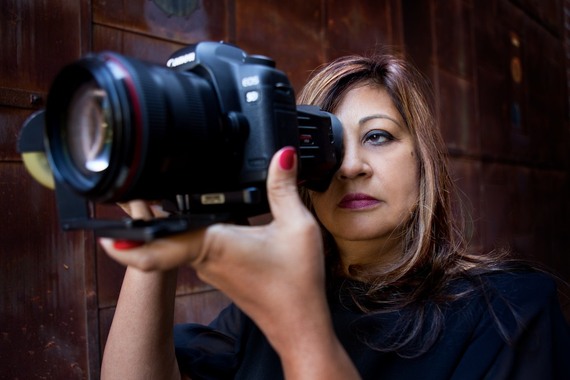
Let me introduce you to some people who have done the impossible and show you how they did it.
Imagine you are Beata, a woman in Rwanda with five children, all of whom were killed by the man standing in front of you. What would you do? Kill him? Many women in Rwanda have faced this very confrontation, but out of all the people I met, I never once talked to one who killed the perpetrator. Most of these women live near -- in the same neighborhood as or even next door to -- the killer himself. How is it even possible to live in such a situation?
I first travelled to Rwanda for my work as a photographer. I knew the numbers -- the estimated 800,000 killed in the 1994 Rwandan Genocide, the 200,000 people who killed them. But until that visit, I didn't fully understand the collective pain of the people there, a pain that continues to this day.
Everyone in Rwanda seemed to be recovering from the horrible tragedy they faced; everyone seemed to have a story of someone doing the impossible.
I heard dozens of stories about pain, tragedy, and recovery, starting with that of my driver. His best friend, who lived down the street from him all his life, shot his father and brother. When the man who killed them came to him, remorseful and repentant, he said, "I can't forgive you; only God can. But I won't kill you. I'll never kill anybody in your family. And I won't kill you."
The film Beyond Right & Wrong reveals that moving on is possible in the worst of circumstances. That everyone takes their own path to moving on, which sometimes includes forgiveness. That breaking the silence, telling your story and listening to the story of your enemy actually humanizes them. That seeing the human in the other person enables forgiveness. That there is another way of dealing with any situation besides violence and revenge. That fighting for justice does not mean giving up the chance for forgiveness. Most importantly, this film shows viewers that peace is possible through forgiveness.
These are stories of loss and unimaginable pain, but they are also stories of resilience and recovery. These stories broke my heart yet gave me enormous hope. They inspired me to create my film, Beyond Right & Wrong, so that victims of tragedy could share their journeys with the world. Stories like Beata's showed me that you can live through these situations and emerge stronger than anyone thought was possible.
Imagine you are Beata, a woman whose five children were killed in the Rwandan Genocide. Would you be able to do the impossible?
To watch the film for free, visit http://filmraise.com/beyond-right-and-wrong/.
This post is part of a series produced by The Huffington Post and Beyond Right & Wrong in conjunction with the Beyond Right & Wrong One Million Viewer campaign, an effort to garner one million unique online views for Beyond Right & Wrong and, thanks to generous donations from Operation Kids Foundation and Share the Mic, support charities at the same time. Find out more about the Beyond Right & Wrong One Million Viewer campaign here. Read all posts in the series here.